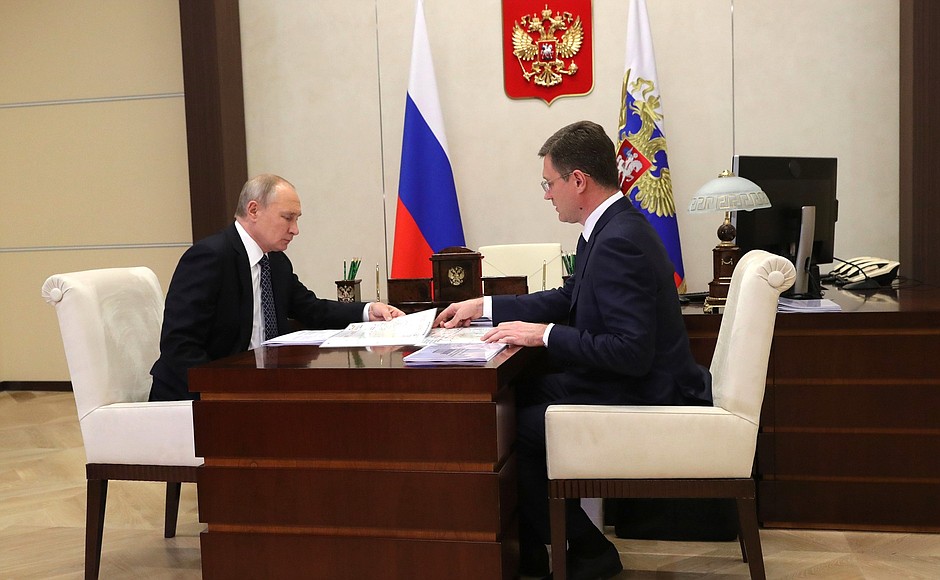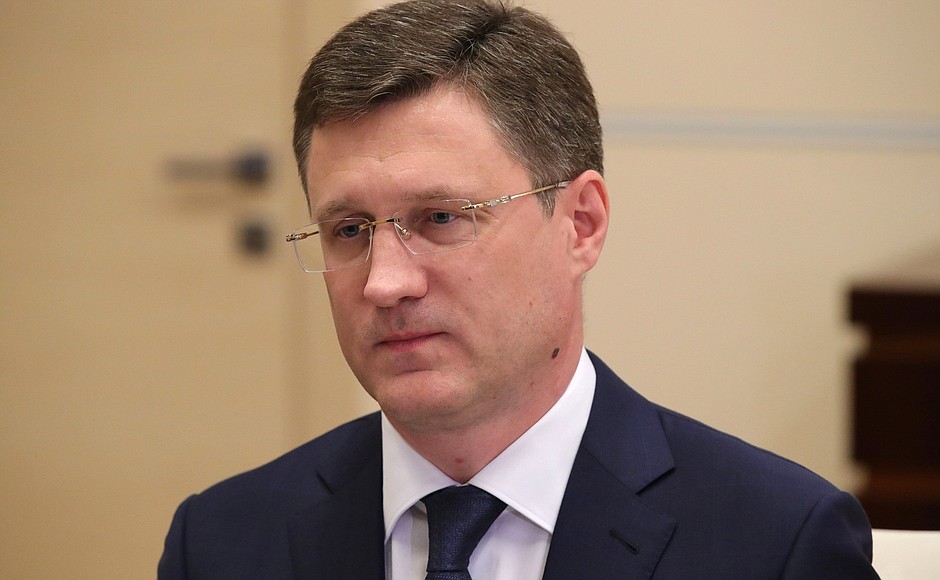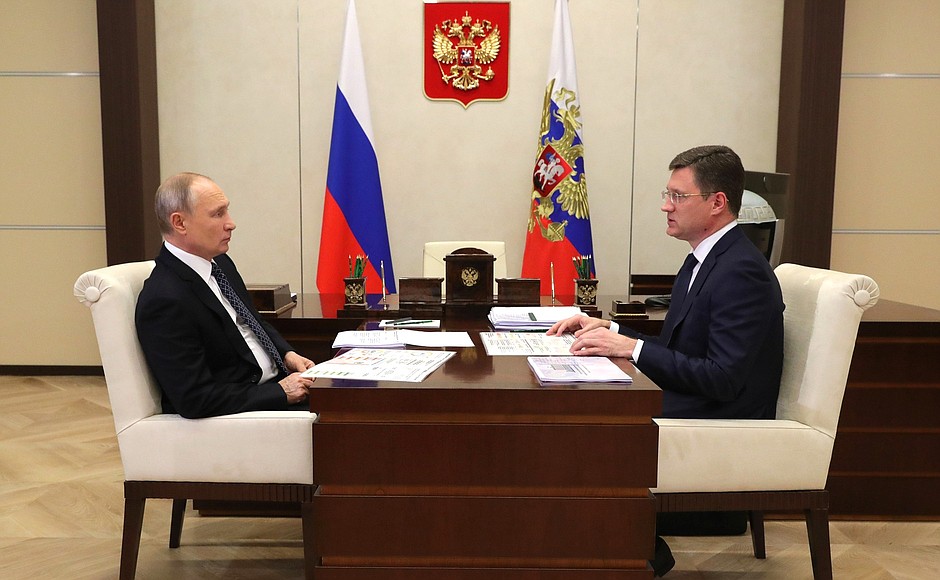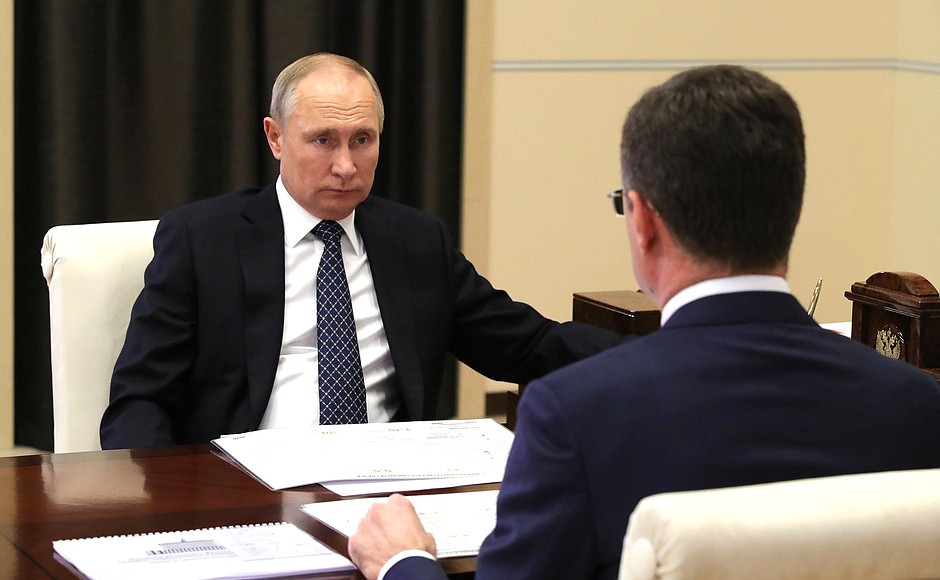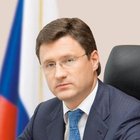President of Russia Vladimir Putin: Mr Novak, I would like to congratulate you and all energy workers on your professional holiday, Energy Industry Worker’s Day.
This year it coincided with the 100th anniversary of the State Plan for the Electrification of Russia. You and I remember from our school years the special attention that was given to that plan in the Soviet Union and Russia. Its implementation and its results were seen as the basis for the development of the power generation sector as a whole.
How does our energy sector look now? What is the current situation?
Deputy Prime Minister Alexander Novak: Thank you, Mr President.
First of all, I would like to thank you on behalf of all energy workers for the constant support and attention you are giving to the energy sector. It is true that this infrastructure sector is responsible for the supply of energy to the entire economy and all our people, for electricity and heat supply to our homes.
Today we are marking a landmark event, the 100th anniversary of the approval of the State Plan for the Electrification of Russia. It was drafted by the State Commission (GOELRO) and adopted in December 1920. The commission was chaired by Gleb Krzhizhanovsky and comprised over 200 scientists, experts and professionals. Our electrical engineering has been and remains one the best in the world.
As you have said, the plan provided the basis for state planning because it covered not just power generation, but also all other economic sectors, transport and, consequently, territorial development.
I would like to show you that plan. The total capacity at that time was only 0.5 GW across 13 power plants. It was necessary to connect them and build additional 30 power plants that would become an integrated energy network. Before that, they had provided power only to some consumers, with no connectivity. The plan was to build 20 combined heat and power plants and 10 hydropower plants over 15 years. The target was exceeded. Those facilities were built in just six years and the total capacity was increased by 1,750 MW.
Now, Mr President, I would like to demonstrate the current state of the energy system compared to 100 years ago. As of today, Russia’s energy system is one of the largest in the world. It is ranked first for territorial coverage and fourth for annual output, which is 1.1 trillion kWh of electricity.
It should be noted that our energy grid is the most reliable despite being the fourth largest for output. The high requirements we set ensure high reliability and protection of our consumers from various technological accidents. Our current capacity is 253,000 MW, which is almost 500 times more than when the GOELRO plan was completed. The energy system includes 2.6 million km of power lines. These are huge figures.
The Russian energy grid is the most diversified in the world because it also includes such clean energy sources as nuclear energy and hydraulic power, which together account for 36 percent. We produce 1,000 MW of solar and wind energy. Fifty percent of our power plants operate on gas and only 14 percent operate on coal. This is our energy mix.
Our energy network currently consists of 1,000 power plants. We have 12 nuclear power plants with several energy units each, almost 170 hydropower plants, 935 combined heat and power plants, and more than 100 wind and solar power facilities built recently.
Mr President, over the past eight years, our electric power industry has grown significantly thanks to the decisions that you have taken, in particular, aimed at attracting investment in the industry. During this period, over the past eight years, 6.4 trillion rubles have been invested in the power industry, to add generating capacity and expand the grid. In addition, generation facilities with capacity of 46,000 MW have been built.
For comparison, I can cite an example of installed capacity in some of our neighbouring countries, such as Belarus, which has only 11,000 MW. I mean, in eight years, we have built an equivalent of four Belarusian energy systems.
We already had well-developed ties with Crimea; now an energy bridge has been built and through several power plants it has been linked with Crimea’s unified energy system. New generating capacity has been added to the Kaliningrad power system, now capable of operating in any situation, even in an isolated mode.
We are developing the eastern part of the system – the BAM, the Trans-Siberian line, the southern and northern parts, and we have connected the western and Siberian parts with the eastern energy system. Now it is a unified power system operating in a synchronous mode. As many as 90 percent of the power system today operates in a synchronous mode, reliably providing our consumers with electricity.
And, importantly, the system’s efficiency has increased. Over the past few years, the number of accidents at generation facilities and transmission grids decreased by 50 percent, and losses are down 10 percent. The connection formalities have been simplified, which is important for our consumers, for individual households. Russia now ranks 7th in the world, meaning it has about the highest indicators in the world, having climbed up from the 181st place in 2012.
We have reduced the number of connection stages from ten to two. We made decisions that allowed us to reduce the time for technological connection from 180 days to a maximum of 30 to 40 days. If there is no need to expand the existing infrastructure, it can be done in 10 days through a mobile app, that is, conclude a technological connection agreement through the website or the app.
We can see that the number of issues arising in the power industry has significantly declined. There are hardly any issues and, whenever they arise, our companies resolve them promptly. Of course, all this needs further development. We have certain suggestions regarding further improvement of the energy industry. They concern modern digital technology and smart metering systems, power distribution and energy storage.
We made a decision in favour of the general public and, with your support, a law on microgeneration was adopted. This law makes it possible for solar panels or small wind power generators, up to 15 KW, to be installed on individual residential buildings and for them to be used for personal electricity needs with any excess power being sold to the power grid. Nothing like this existed before. This allows people to significantly save money and even profit from selling power to the grid. This is an interesting innovation. We will be developing service systems that will help consumers see which electric equipment consumes energy and thus save money by benefitting from the most favourable tariffs.
Mr President, thank you very much for your greetings. We are very grateful for your support.
Allow me to say a few words about the performance of the fuel and energy industry.
Vladimir Putin: Wait. There was a problem with maintaining and repairing electric power facilities some time ago. Where do things stand now?
Alexander Novak: We analyse the situation every year. Strict controls and monitoring are in place. Over the past two years, we have adopted 30 regulations on the state of the power equipment and technical requirements for this equipment. We are keeping strict records and conducting strict monitoring of parameters, especially when we prepare for the autumn and winter season.
Obviously, there are occasional cases where equipment requires maintenance and owners sometimes skip maintenance work. But we are shifting to risk-oriented models where assessment is based on the technical condition of the equipment rather than on the wear and tear according to accounting records. This provides for a more efficient use of funding for equipment distribution and maintenance.
Thanks to the investment I mentioned earlier, over the past eight years, we have upgraded almost 20 percent of our core electric power facilities. Recently, you supported a programme to upgrade power generation plants producing almost 40,000 MW. This means that within the next decade, 15 percent of the facilities will be upgraded to operate using the latest technology. There is continuous improvement in this area and we are certainly overseeing these steps.
Vladimir Putin: Good. Now tell me about the industry in general.
Alexander Novak: I would like to note that this year our fuel and energy complex has encountered the same set of problems as the rest of the world. But it has probably been affected more, because of a major decline in demand since the start of the pandemic and the measures taken by many foreign governments. This has had a major impact on our energy sector. Nevertheless, it can be said that the sector has attained all its goals despite these difficulties, primarily, ensuring full-scale deliveries of energy resources to the domestic market, including petrochemicals, gas, coal and, consequently, electricity.
However, the yearend figures will be lower than last year. This year we will produce some 514 million tonnes, which is 8.4 percent less than last year. Slide 7 shows the May decline and subsequent gradual recovery. It is Russia’s oil production with due regard for the agreement between OPEC and non-OPEC countries. We have restored the scale of production by 25 percent in light of increasing consumption around the world.
As for natural and associated gas, we hope to report some 700 billion cubic metres this year, which is 5 percent or 37 billion cubic metres less than the year before. The gas sector has not been severely hit by the pandemic, because mobility is not a big factor with our consumers.
You can see that we reached last year’s figures in August-September, which means the sector is recovering. The situation is not so good in the coal sector, which will report a 9 or 10 percent decline compared to last year, and figures in power generation will go down approximately 2.7 percent. Initially, we expected consumption to decrease even more, but this did not happen, which is a positive fact: electricity consumption is gradually rebounding. This means that our industry is rebounding as well.
I would like to say that the issues related to the spread of COVID-19 have had an impact on our industries as well. Nevertheless, we have been focusing on the safety of fuel and energy industry workers. All the facilities are enforcing sanitary measures and providing personal protection equipment. Masks are mandatory. We are paying particular attention to the monitoring of shift workers. We are rigorously overseeing the measures being taken by industrial production facilities and the facilities of the fuel and energy industry.
As concerns the electric power industry, we had a task to ensure that healthcare facilities were provided with modern and fast energy supply. The 32 new healthcare facilities that have been built in the country were connected to power sources promptly and under strict supervision.
Vladimir Putin: Yes, thank you.
Alexander Novak: Twenty-three Defence Ministry hospitals and around 40 repurposed medical centres were connected to a faster energy supply. The 1,573 healthcare facilities equipped with ventilators and other equipment and which are treating COVID-19 patients are subject to special monitoring. We are keeping an eye on these facilities to ensure they have a first-rate power supply.
Also, I would like to report on the oil product prices expected as of the end of 2020. I think it is a crucial issue. Diesel fuel prices have been stable this year, rising by just 1.7 percent since January. I am showing you this slide because you can see how the netback and oil depot prices have been fluctuating in response to the volatile situation in the global markets.
The mechanism developed as per your instruction to alleviate the effects of the global prices has allowed us to maintain the oil product prices below or equal to the inflation rate, thanks to the damping mechanism. During a period when the oil and oil product prices in the global markets are high, a damper is paid from the budget. But when the prices are low, like today, the oil company pays to the budget. Right now they are paying quite substantial amounts to the budget. Zero balance can be achieved when the price is around $50 to $55 per barrel.
And further on, we will strictly monitor, as per your instruction, that the prices do not outrun inflation. This also applies to petrol, diesel fuel and kerosene-type jet fuel. With regard to jet fuel, I have a slide for you. Prices are practically 19–20 percent lower today than in 2019.
Vladimir Putin: Yes. You are well-versed on this matter. The industry must be comfortable, but consumers shouldn’t be getting the short end of the stick, either. Everything is clear there. We maintain close contact with the oil people on this subject, the mechanism works well, and I hope it will kick in when time comes.
Alexander Novak: Thank you, Mr President. May I say a few words about the goals of the fuel and energy complex?
Of course, our main goal is to create a proper environment for progress in the fuel and energy complex and to maintain our position on the global market. I see several trends here.
In particular, this is about the climate agenda, which concerns putting in certain requirements for a carbon-free economy and carbon-free neutrality. Some countries have already announced their goals and targets up to 2050. This, of course, will significantly affect the demand for conventional energy resources. The second trend is about an excess of resources around the world as a result of technological advances, which will also lower the demand.
So, based on the above trends, I believe that we need to concentrate our efforts on two areas: expanding the domestic market, on one hand, and expanding and diversifying our exports, on the other. That includes exports related to added value from processing hydrocarbons and innovative energy.
As far as the domestic market is concerned, we consider it important to fulfil your instructions to expedite the country’s gas infrastructure development. We can see great potential here, and the goals that you have set will be achieved.
The Government has prepared new concepts and a road map. We will propose changing the relationship in this area. Today, regions, municipalities and gas suppliers are responsible for the provision of gas supply, as well as homeowners who also cover a portion of the associated costs. We propose creating a single operator, which, just like in the power industry, would be responsible for bringing gas to the doorstep of a house, directly to the consumer. This means there will be one agreement, a one-stop shop at a multifunctional centre for public and municipal services (MFC) and, accordingly, a single agreement on a technical network connection.
Vladimir Putin: Let’s discuss this in more detail later.
<…>
